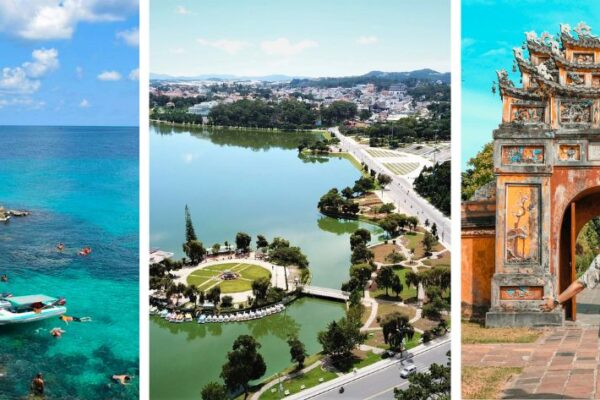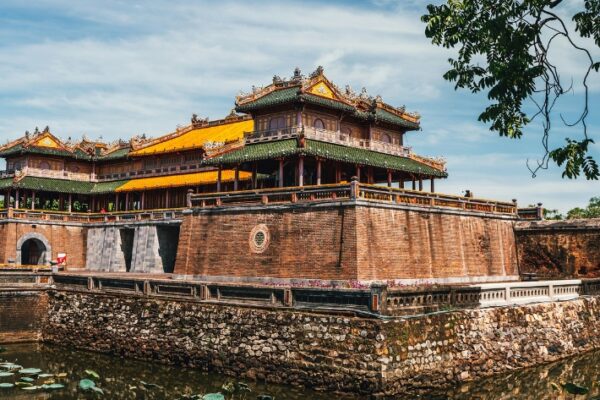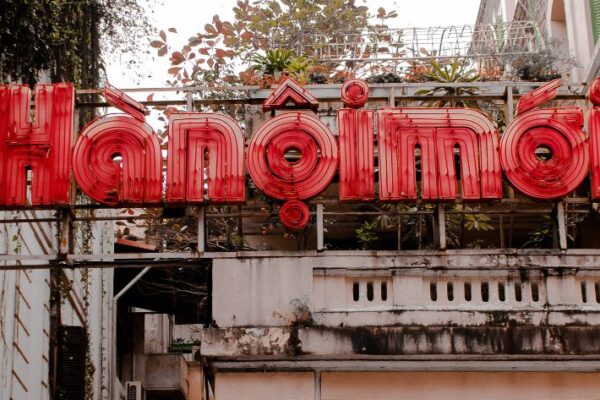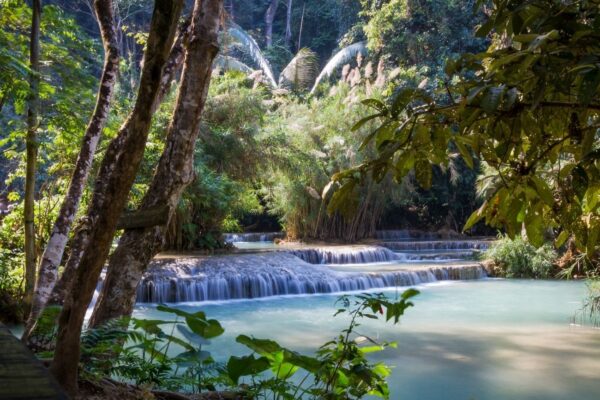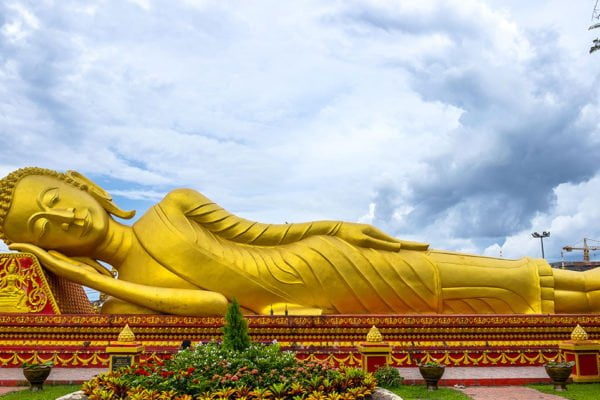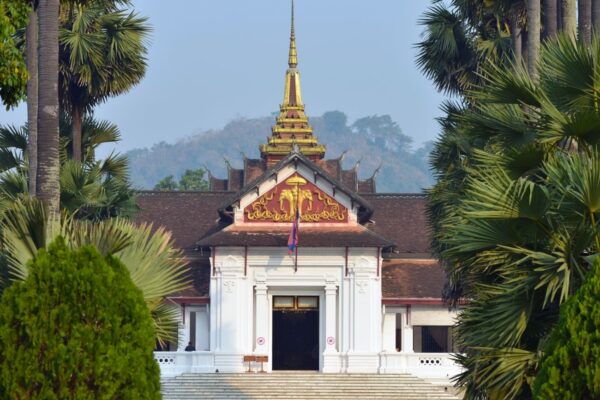Where To Visit In Laos For First-time Travelers?
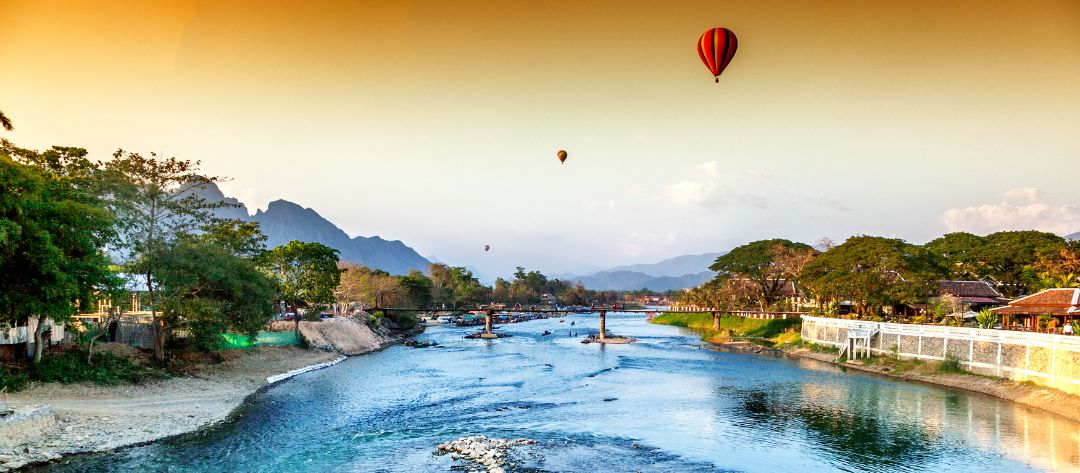
Laos, the only landlocked country in Southeast Asia, is a hidden treasure for those seeking serenity, natural beauty, and cultural richness. Unlike its more tourist-heavy neighbors, Laos offers a slower pace of life, perfect for immersive and reflective travel. If you’re wondering where to visit in Laos, this comprehensive guide introduces ten destinations that blend heritage, adventure, and unique local experiences, ideal for first-time visitors.
Top 10 Places to Visit in Laos for First-Time Travelers
Whether you’re drawn to ancient temples, lush mountains, or peaceful riverside towns, this curated list covers every must-visit in Laos for those setting foot in the country for the first time.
Luang Prabang
Luang Prabang, a UNESCO World Heritage city since 1995, is the spiritual and cultural heart of Laos. Nestled at the confluence of the Mekong and Nam Khan rivers, the city boasts a stunning blend of traditional Lao wooden houses, over 30 gilded wats (temples), and remnants of French colonial architecture that date back to the 19th century.
To fully appreciate what Luang Prabang has to offer, make sure to explore its most celebrated attractions:
- Mount Phou Si: Located in the center of town, this 100-meter-high hill provides panoramic views of the city and the rivers. A climb of 355 steps takes you past small shrines and golden stupas to a magnificent sunset vista.
- Royal Palace Museum: Once the royal residence, now a museum showcasing royal artifacts, including the sacred Phra Bang Buddha, which the city is named after.
- Luang Prabang Night Market: Open daily from 5 PM, it stretches along Sisavangvong Road and features hundreds of stalls selling textiles, local teas, silver jewelry, and handcrafts.
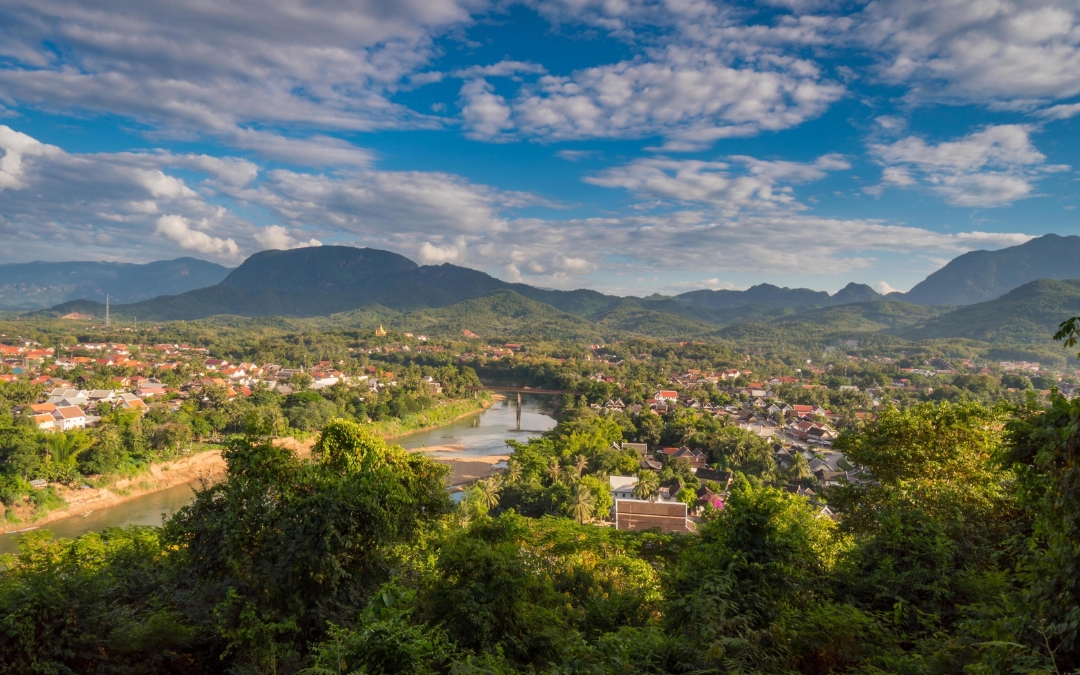
A UNESCO World Heritage site with stunning temples and waterfalls.
Beyond sightseeing, there are a few exceptional experiences that will make your visit to Luang Prabang unforgettable:
- Morning Alms-Giving Ceremony (Tak Bat): At sunrise, saffron-robed monks walk through the quiet streets to receive alms from locals. Visitors should dress modestly and observe respectfully.
- Kuang Si Waterfalls: Located 29 km south of town, the multi-tiered falls drop 60 meters into pools of emerald blue. Nearby is a bear rescue center managed by Free the Bears.
When it comes to cuisine, Luang Prabang has plenty of flavors to discover:
- Tamarind Cooking School: Offers half-day and full-day classes where participants cook dishes like jeow (Lao dips) and laap (meat salad).
- Street vendors offer snacks such as coconut rice pancakes, grilled banana, and Lao-style baguettes.
Travel tip: The high-speed Laos-China Railway, launched in 2021, connects Luang Prabang with Vientiane and northern cities, significantly reducing travel time and enhancing accessibility.
Vang Vieng
If you’re wondering where to visit in Laos for a mix of natural beauty and outdoor adventure, Vang Vieng is an ideal choice. Located about 150 km north of Vientiane, this picturesque riverside town is framed by dramatic limestone karsts and the tranquil Nam Song River. While it was once infamous for its backpacker party scene, Vang Vieng has undergone a transformation and is now celebrated as a hub for eco-tourism, outdoor sports, and stunning scenery.
Visitors flock to Vang Vieng for thrilling outdoor activities and scenic beauty:
- River Tubing and Kayaking: Drift lazily on an inner tube or paddle through gentle rapids with stunning mountain scenery.
- Hot Air Balloon Rides: Offering a bird’s-eye view of the karst formations, these early morning flights are among the most affordable in Asia.
- Caves: Explore Tham Chang, used as a refuge during the Chinese-Ho invasion in the 19th century, or Tham Nam, where visitors tube through a water cave wearing headlamps.
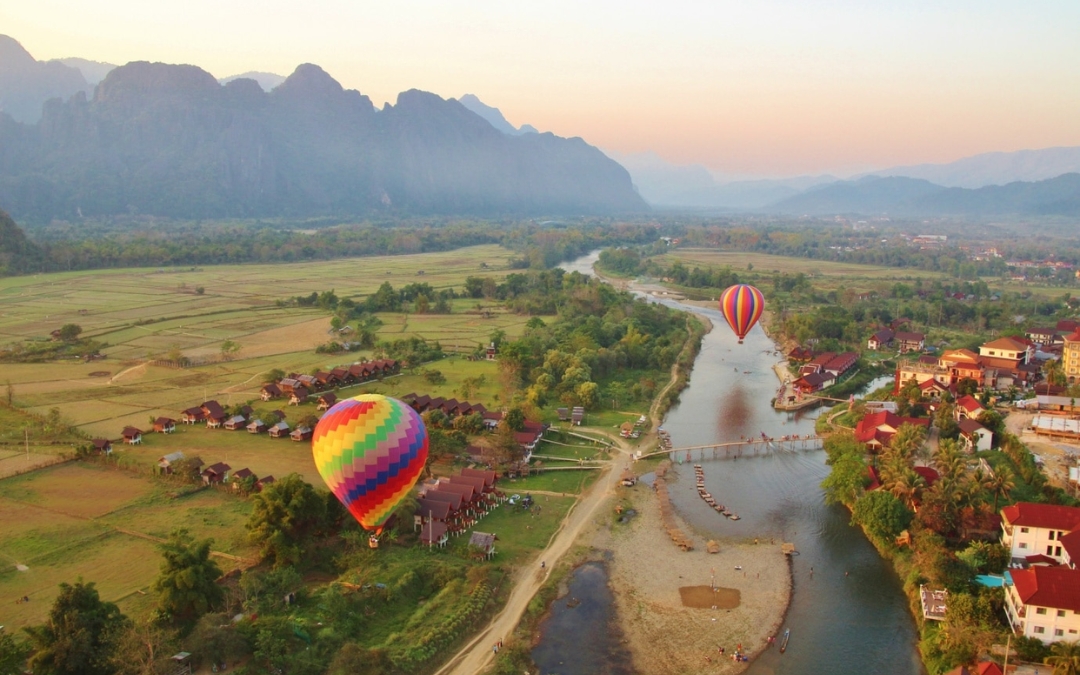
Known for its adventure activities and scenic river views.
Visitors can also find cultural and natural gems just outside the town:
- Visit Blue Lagoon 1 and 3 for swimming in turquoise waters, zip-lining, and relaxing among tropical greenery.
- Explore Hmong and Khmu ethnic villages nearby, many of which offer homestays and handicraft demonstrations.
When choosing where to stay, consider the variety of scenic accommodations available. Choices range from riverside bungalows to eco-resorts nestled in rice paddies. Many lodgings provide bicycles and maps for self-guided tours.
Vientiane
The capital of Laos sits on the northern bank of the Mekong River, just across from Thailand. Despite being the largest city in the country, Vientiane maintains a small-town charm with wide boulevards, French-inspired cafes, and centuries-old Buddhist temples—making it a must visit in Laos for those who enjoy relaxed cultural exploration.
Make time for these key landmarks that reveal the city’s cultural and historical identity:
- Pha That Luang: The 45-meter golden stupa is believed to enshrine a relic of the Buddha and is the country’s most sacred site.
- Patuxai Monument: Modeled after the Arc de Triomphe but adorned with traditional Lao motifs. Climb the stairs to the top for sweeping views.
- COPE Visitor Centre: Highlights the impact of UXOs (unexploded ordnance) and the work of prosthetic and rehabilitation services. Entry is free and donations are welcomed.
To experience Vientiane’s local rhythm, spend time at these community-focused spots:
- Mekong River Promenade: Popular with locals for evening walks, aerobics, and dining at riverside food stalls.
- Talat Sao Market: A mix of indoor and outdoor shopping with vendors selling electronics, fabrics, and traditional medicine.
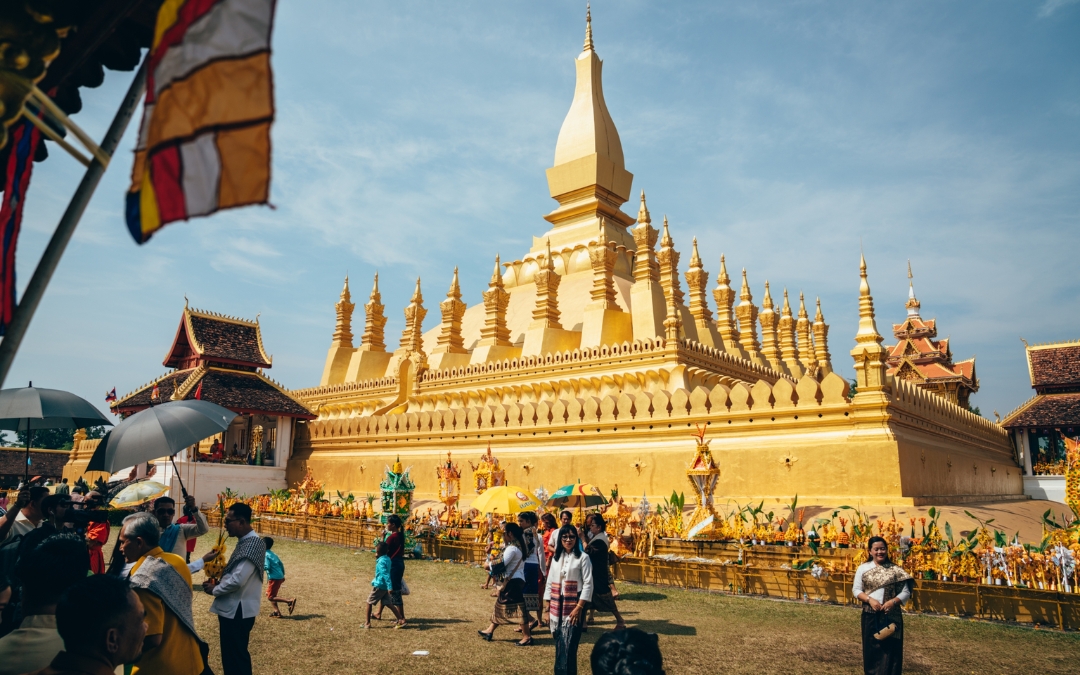
The capital city offers a mix of history, culture, and quiet charm.
For a half-day trip outside the city, don’t miss this unique site:
- Buddha Park (Xieng Khuan): A sculpture park 25 km from the city with over 200 Hindu and Buddhist statues, including a 40-meter reclining Buddha.
>> See tour: The Very Best Of Laos Tour
Plain of Jars (Xieng Khouang)
Deep in the northeast highlands of Laos lies one of the country’s most mysterious and culturally significant sites: the Plain of Jars. Spread across the Xieng Khouang Plateau, this archaeological landscape is scattered with thousands of massive stone jars, each weighing up to several tons. Their origins date back more than 2,000 years, and their exact purpose remains an enigma that continues to intrigue scholars and travelers alike.
These are the most accessible and studied jar sites:
- Site 1 (Ban Ang): Located near Phonsavan, Site 1 features over 300 jars and includes a visitor information center with historical exhibits.
- Site 2 and Site 3: Quieter and more rustic, these sites offer serene views over rice fields and forests, accessible via short hikes or by motorbike.
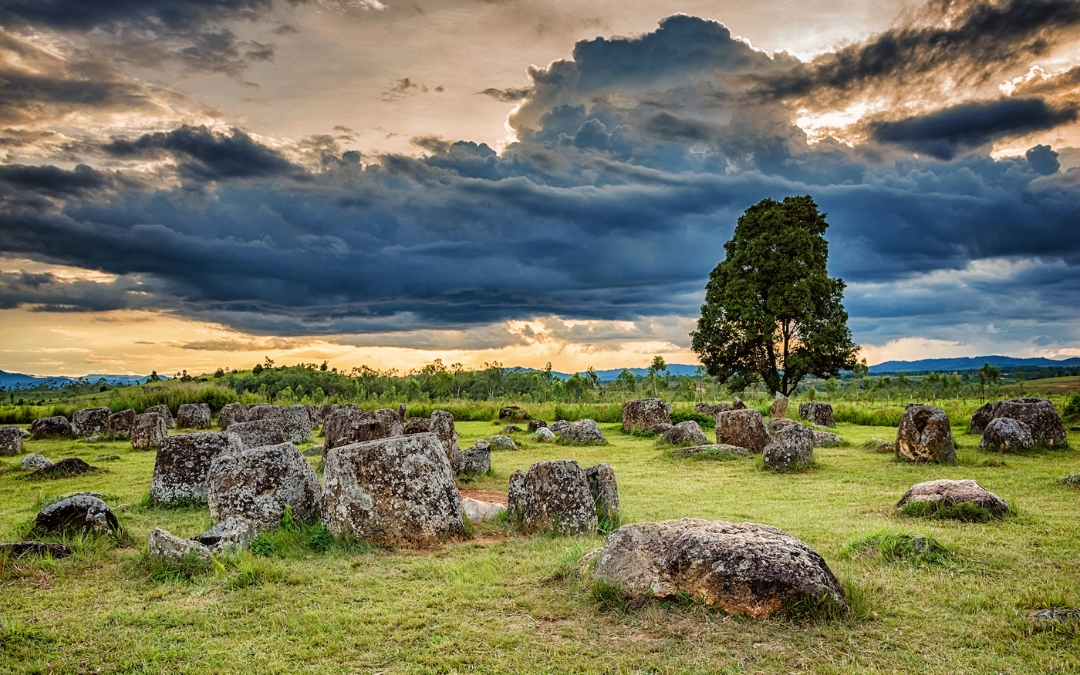
Mysterious ancient stone jars in a peaceful landscape.
To enrich your visit, don’t miss these complementary experiences:
- Tour the Xieng Khouang Provincial Museum, which showcases Iron Age tools and photos of excavation sites.
- Learn about the area’s war history and efforts to clear unexploded ordnance with a guided tour.
- Visit nearby Hmong and Tai Dam villages to experience local weaving, farming, and traditional architecture.
Travel Logistics: Phonsavan serves as the regional hub, with daily flights from Vientiane or long-distance buses from Luang Prabang. Accommodations range from simple guesthouses to comfortable hotels.
Si Phan Don (4,000 Islands)
In southern Laos, where the Mekong River spreads wide and calm near the Cambodian border, lies Si Phan Don—literally translated as “Four Thousand Islands.” This tranquil riverine archipelago is ideal for those seeking slow travel and genuine local encounters in a uniquely laid-back setting.
Among the numerous islands, these are the most visitor-friendly:
- Don Det: Popular with backpackers, it offers riverside bungalows, bicycle rentals, and sunset bars.
- Don Khon: Quieter and more scenic, connected to Don Det by an old French railway bridge.
- Don Khong: The largest island, ideal for travelers interested in culture, temples, and traditional farming life.
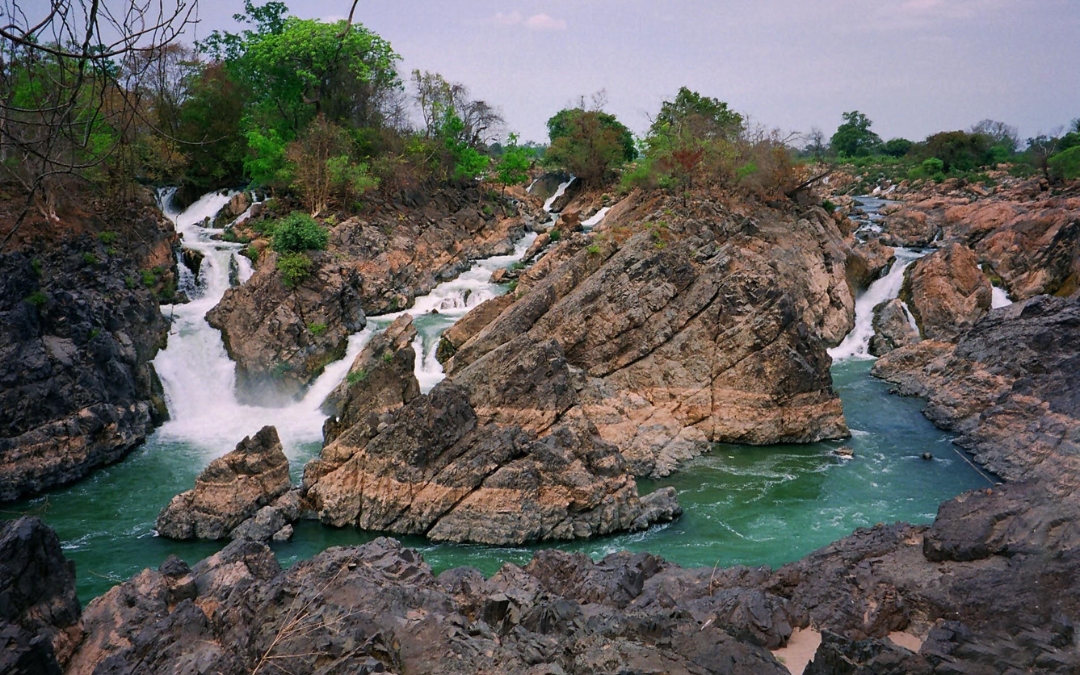
Si Phan Don is a tranquil paradise perfect for relaxing and exploring.
There’s plenty to explore while soaking in the peaceful pace:
- Khone Phapheng Falls: The widest waterfall in Southeast Asia, thundering during rainy season and impressively powerful year-round.
- Li Phi Falls: Also known as Somphamit Falls, a spiritual place where locals believe evil spirits are swept away.
- Dolphin Spotting: Join a guided boat tour to see endangered Irrawaddy dolphins near the Cambodian border, especially during dry season.
How to Reach: Take a bus or van to Nakasong, then a 15-minute boat ride to your island of choice. Facilities are basic but charming, perfect for nature lovers and off-the-grid travelers.
>> Read more: Best Time To Visit Laos For Timeless Charm Exploration
Pakse and Wat Phou
Pakse, the commercial center of southern Laos, sits at the confluence of the Mekong and Xe Don rivers. While often treated as a transit point, the city and its surrounding area offer cultural heritage, riverside relaxation, and access to one of the country’s most sacred ancient temples: Wat Phou.
Cultural and historical highlights include:
- Wat Phou: A pre-Angkorian Khmer temple complex dating back to the 5th century. Built on the slopes of Mount Phou Kao, it features terraces, barays (reservoirs), and detailed lintels illustrating Hindu cosmology.
- Champasak Town: A sleepy riverside village with French colonial houses and a scenic waterfront ideal for cycling.
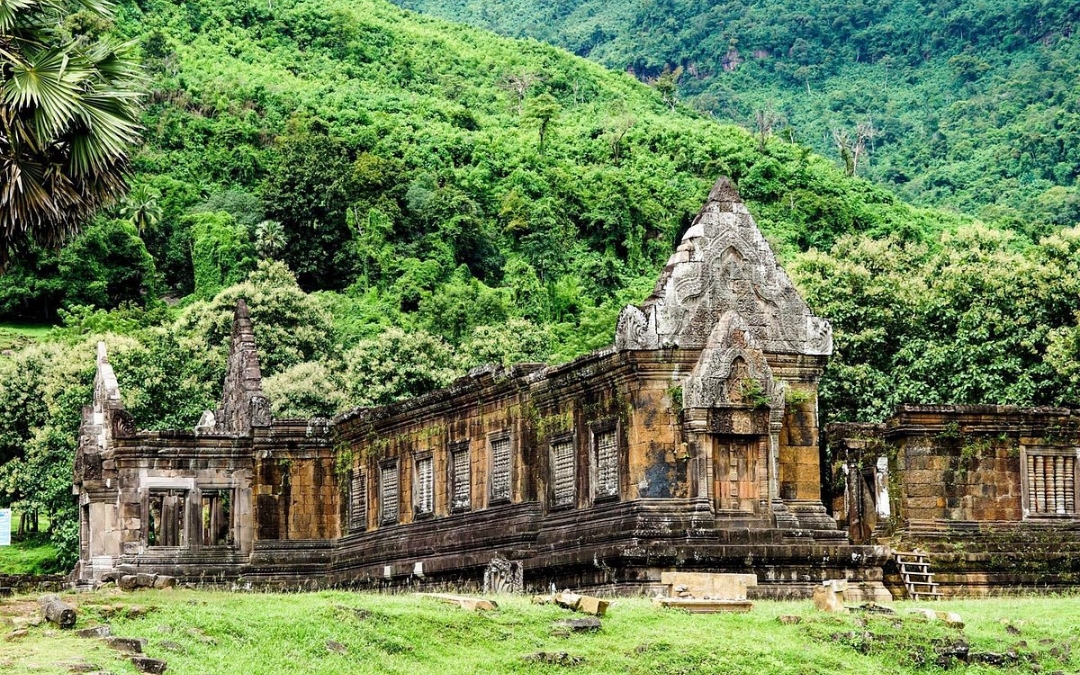
Discover the ancient temples and serene surroundings in Pakse.
Additional experiences to enhance your time in the area:
- Explore Dao Heuang Market, a local hub for Lao coffee, tea, spices, and textiles.
- Enjoy a sunset Mekong dinner cruise with local cuisine and traditional music.
Getting There: Direct flights connect Pakse with Vientiane, Luang Prabang, and Bangkok. Tuk-tuks and rental scooters are the best way to get around locally.
Bolaven Plateau
The Bolaven Plateau is a cool, verdant region in southern Laos famous for its coffee plantations, dramatic waterfalls, and minority ethnic cultures. Elevated between 1,000 and 1,300 meters, it stands out as a unique highlight among the best options for where to visit in Laos.
Natural highlights that define the plateau’s beauty:
- Tad Fane Waterfall: Twin waterfalls dropping 120 meters into a deep gorge—best viewed early morning when mist hovers.
- Tad Yuang and Tad Champee: Accessible and ideal for picnics, these waterfalls are family-friendly and popular with locals.
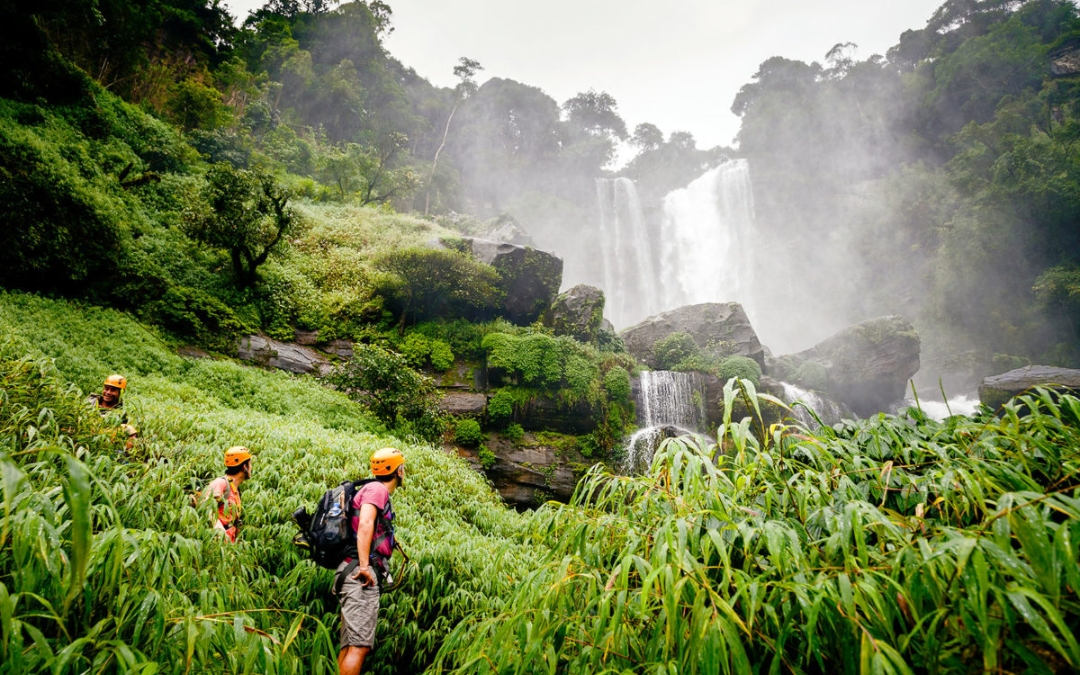
Famous for its coffee plantations and beautiful waterfalls.
Cultural and agro-tourism experiences worth exploring:
- Visit organic farms like Jhai Coffee House or Sinouk Coffee Resort for bean-to-cup tours and tastings.
- Take guided treks through Alak, Katu, or Laven villages to learn about animist traditions, textiles, and communal farming.
Suggested Route: Rent a motorbike or join a loop tour starting from Pakse. Itineraries from two to five days allow you to explore waterfalls, plantations, and homestays at your own pace.
Nong Khiaw
Tucked between dramatic limestone mountains and stretched along the peaceful Nam Ou River, Nong Khiaw is one of northern Laos’ most breathtaking destinations. A quiet alternative to Luang Prabang, this village appeals to nature lovers, hikers, and travelers seeking authentic local experiences in a less commercialized setting.
Here are some of the top activities for visitors to enjoy:
- Pha Daeng Peak Hike: A steep but rewarding 1.5-hour hike leading to a panoramic viewpoint over Nong Khiaw and the Nam Ou River valley—best done at sunrise.
- Tham Pha Thok Caves: Once used as bomb shelters during the Indochina War, these caves offer insight into Laos’ wartime resilience and are a short walk from the town center.
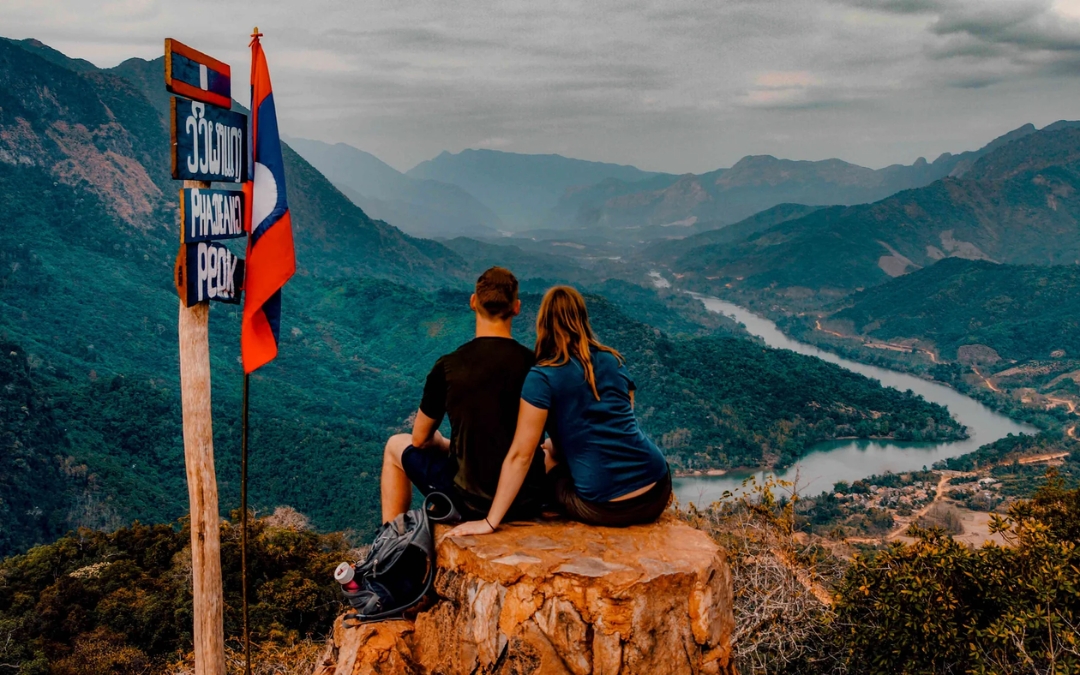
A picturesque village surrounded by stunning limestone mountains.
To discover more of the region’s rural charm, venture further out:
- Take a scenic longtail boat ride to the nearby village of Muang Ngoi, a remote community without road access, known for hiking, waterfalls, and off-grid homestays.
- Visit local weaving villages such as Ban Sop Jam, where you can watch traditional textile production and purchase handmade scarves directly from the artisans.
Where to Stay and Eat: Nong Khiaw offers a range of budget to mid-range riverside bungalows and family-run guesthouses. Cafés like Delilah’s or Coco Home offer local fusion dishes and great views.
How to Get There: Nong Khiaw is about 4-5 hours by minivan from Luang Prabang. Roads are winding, but the journey is incredibly scenic.
>> Read More: Guide To A Perfect Honeymoon In Laos
Bokeo Nature Reserve and The Gibbon Experience
Located in the far northwest of Laos, Bokeo Nature Reserve is a standout choice for those deciding where to visit in Laos for adventure and eco-tourism. Dense forests, rare wildlife, and dramatic terrain combine in this remote protected area—best known for hosting the Gibbon Experience, a canopy-level trek like no other.
Here’s what makes the Gibbon Experience so unforgettable:
- Ziplining through the forest canopy: Glide from tree to tree hundreds of feet above the ground using one of Asia’s most extensive zipline systems.
- Treehouse Overnight Stay: Sleep in the world’s highest treehouses, built 30–40 meters above ground level, with stunning views and basic comforts.
- Wildlife Watching: Wake up to the calls of the endangered black-crested gibbon, along with chances to see hornbills, civets, and giant squirrels.
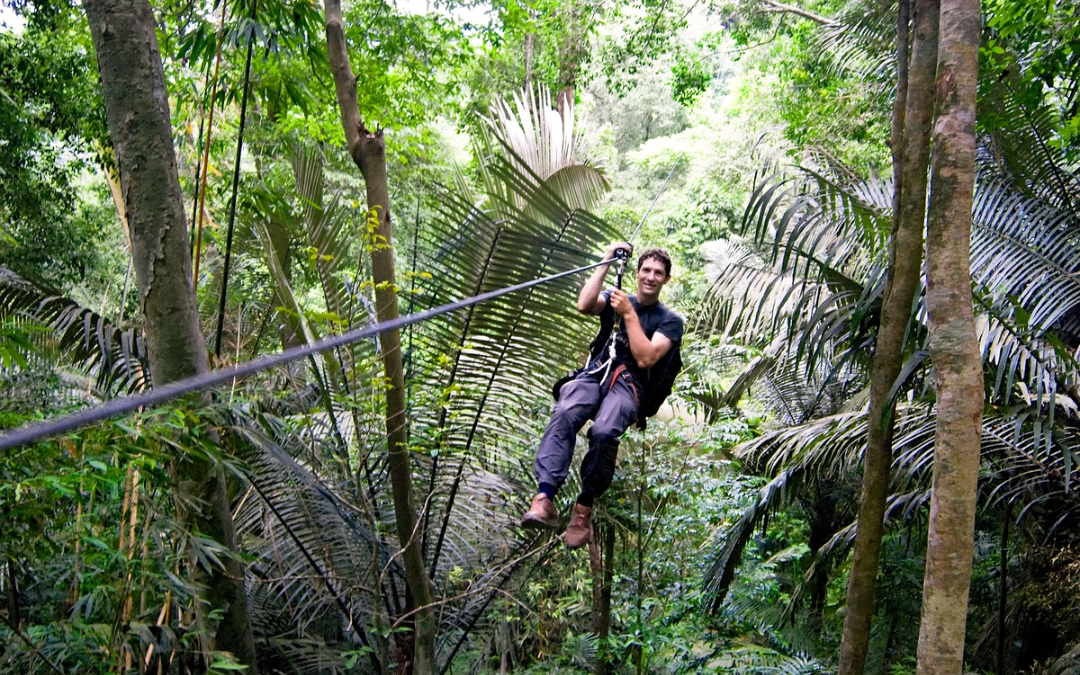
An eco-tourism adventure with treetop accommodations.
The experience also promotes conservation and sustainable tourism:
- All proceeds support forest protection and anti-poaching patrols in the reserve.
- The project involves local communities, ensuring income while protecting biodiversity.
Important Travel Information:
- The Gibbon Experience starts from Huay Xai, on the Laos-Thailand border. From there, 4WD vehicles transport guests into the forest.
- Physical fitness is required. Pack light, and expect no running water or electricity—this is an unplugged adventure.
Muang La
For travelers looking to truly go off the beaten path, Muang La in northern Laos offers a rare blend of luxury, nature, and indigenous culture. Located in Oudomxay Province, about a five-hour drive from Luang Prabang, this peaceful village lies nestled among forested mountains, hot springs, and ethnic minority communities. It’s a place to slow down, rejuvenate, and connect with both people and nature.
Start with the natural and cultural highlights that define the region:
- Muang La Hot Springs: Naturally heated by geothermal activity, these mineral-rich waters are ideal for a tranquil soak after a day of exploration.
- Phachao Singkham Temple: A revered hilltop Buddhist temple that offers sweeping views over the valley and surrounding rice paddies.
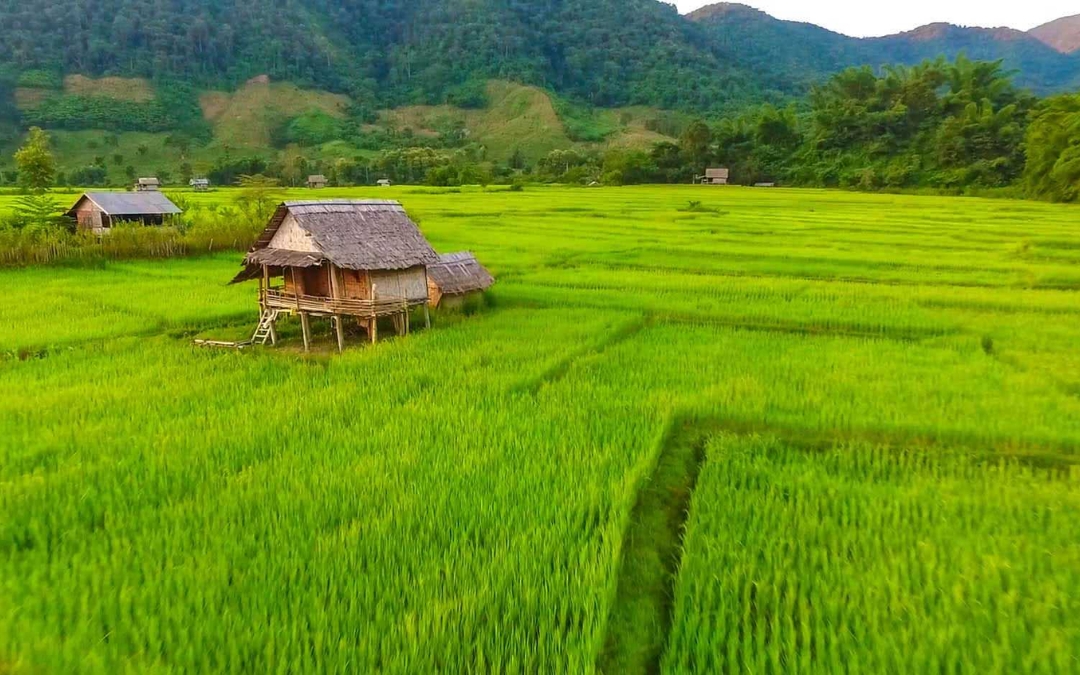
A remote, peaceful village perfect for trekking and cultural immersion.
To gain deeper cultural insight, explore beyond the town itself:
- Visit Akha and Ikhos villages on guided treks through the surrounding hills. These indigenous groups maintain traditional lifestyles, with unique dress, architecture, and spiritual practices.
- Learn about salt production at a local spring-fed salt mine that has been operating for generations.
Where to Stay: The standout option is Muang La Lodge, a boutique eco-resort combining sustainability with comfort. It offers spa services, farm-to-table dining, and curated excursions to ethnic villages.
Travel Tips: Muang La is best reached by private car or arranged transfer from Luang Prabang or Oudomxay. It’s advisable to visit during the dry season (November to March) for clearer trekking trails and cooler weather.
>> See Tour: Laos Off The Beaten Path 28 Days
Discover Where to Visit in Laos with Confidence
Laos is a destination that embraces travelers with its rich cultural soul, timeless landscapes, and sense of peace often lost in more commercialized parts of Asia. Whether you’re captivated by ancient temples in Luang Prabang, adventure in Vang Vieng, or serene village life in Si Phan Don, knowing where to visit in Laos can transform your journey from good to unforgettable.
To truly unlock the heart of Laos, travel with a partner who understands the land intimately. Asia Pioneer Travel offers expertly customized itineraries designed around your interests—be it culture, nature, cuisine, or adventure.
Explore confidently, travel meaningfully—start your Laos journey with us today.
